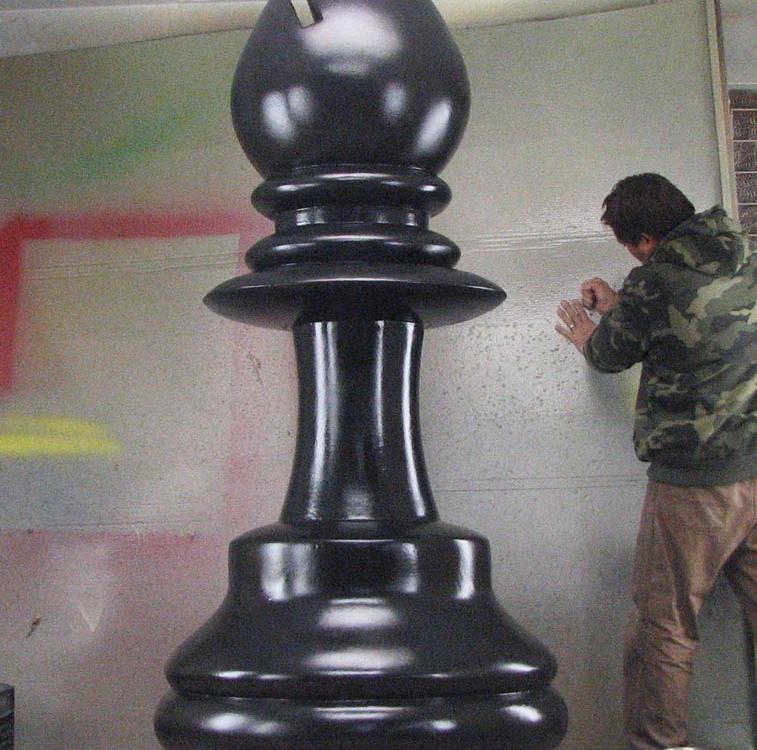
Next to the King

The term "bishop" first entered the English language in the 16th century, with the first known written example dating back to 1560s. In all other Germanic languages, except for Icelandic, it is called various names, all of which directly translates to English as "runner" or "messenger" (e.g. in Norwegian "Løper", in Danish "Løber", in Swedish "Löpare", in German "Läufer" and in Dutch "loper".) (In Finnish, the word is "lähetti", with the same meaning.) In Romanian, it is known as "nebun" which refers to a crazy person (similarly to the French name "Fou" which is most likely derived from "Fou du roi", a jester). In Icelandic, however, it is called "biskup", with the same meaning as in English. Interestingly, the use of the term in Icelandic predates that of the English language, as the first mentioning of "biskup" in Icelandic texts dates back to the early part of the 14th century, whilst the 12th century Lewis Chessmen portray the bishop as an unambiguously ecclesiastical figure.
The canonical chessmen date back to the Staunton chess set of 1849. The piece's deep groove symbolizes a bishop's (or abbot's) mitre. Some have written the groove originated from the original form of the piece, an elephant with the groove representing the elephant's tusks. The British chose to call the piece the bishop because the projections at the top resembled a mitre. This groove was interpreted differently in different countries as the game moved to Europe; in France, for example, the groove was taken to be a jester's cap, hence in France the bishop is called "Fou" (the jester; the word can also mean madman or gannet).
In some Slavic languages (e.g. Czech/Slovak) the bishop is called "střelec/strelec", which directly translates to English as a "shooter" meaning an archer, while in others it is still known as "elephant" (e. g. Russian slon, Turkish fil). In South Slavic languages it is usually known as "lovac", meaning "hunter", or "laufer", taken from the German name for the same piece.
The Bishop has many faces indeed, he is the closest to the King and Queen, he is the attendant of the kingdom, a faithful counselor of the King. In Spain and Italy he is called a knight, in England he is a Bishop, in France a jester, a Runner in Germany, in Slovakia and Czech Republic he is a shooter, and in Yugoslavia he is called a hunter. Bulgaria is the only nation that really appreciated his true and genuine role; in the chess notation they always designate the bishop by an «O» for Officer, an Officer that is desperate to fulfill his duty in the name of his Majesty, an Officer who knows all of his army, an Officer worthy of the name.
Here are a few examples:
Example #2
Example #3


